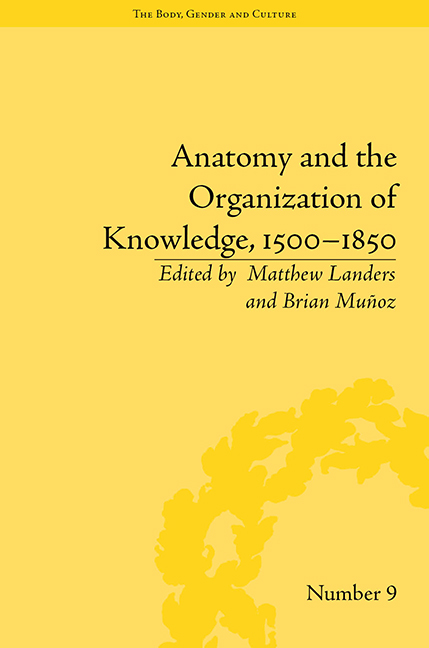Book contents
- Frontmatter
- CONTENTS
- List of Contributors
- List of Figures
- Introduction
- Part I The Body as a Map
- 1 Early Modern Dissection as a Physical Model of Organization
- 2 ‘Who Will Not Force a Mad Man to be Let Blood?’: Circulation and Trade in the Early Eighteenth Century
- 3 Earth's Intelligent Body: Subterranean Systems and the Circulation of Knowledge, or, The Radius Subtending Circumnavigation
- 4 ‘After an Unwonted Manner’: Anatomy and Poetical Organization in Early Modern England
- 5 Subtle Bodies: The Limits of Categories in Girolamo Cardano's De Subtilitate
- Part II The Collective Body
- Part III Bodies Visualized
- Notes
- Index
5 - Subtle Bodies: The Limits of Categories in Girolamo Cardano's De Subtilitate
from Part I - The Body as a Map
- Frontmatter
- CONTENTS
- List of Contributors
- List of Figures
- Introduction
- Part I The Body as a Map
- 1 Early Modern Dissection as a Physical Model of Organization
- 2 ‘Who Will Not Force a Mad Man to be Let Blood?’: Circulation and Trade in the Early Eighteenth Century
- 3 Earth's Intelligent Body: Subterranean Systems and the Circulation of Knowledge, or, The Radius Subtending Circumnavigation
- 4 ‘After an Unwonted Manner’: Anatomy and Poetical Organization in Early Modern England
- 5 Subtle Bodies: The Limits of Categories in Girolamo Cardano's De Subtilitate
- Part II The Collective Body
- Part III Bodies Visualized
- Notes
- Index
Summary
In 1550, Italian doctor and professor of medicine Girolamo Cardano (1501–74) published an important work in the course of his career as physician, mathematician and astrologer, the De subtilitate, libri XXI. The work takes on the difficult task of exploring what it calls subtilitas: ‘My purpose in writing this work is to expound the significance of subtilitas. Now subtilitas is a certain intellectual process whereby sensible things are perceived with the senses and intelligible things are comprehended by the intellect, but with difficulty.’ The challenge of studying things that are difficult to perceive with the senses and to grasp with the intellect means that only those with exceptional faculties of intellect and sense will be able to understand the elusive and complex phenomena that De subtilitate discusses.
Cardano warns his reader from the opening lines of the book that describing the subtle often means abandoning the dominant Aristotelian model of inquiry, where causes must be discovered before describing their potential effects. In Aristotle's oeuvre, the search for cause–effect relationships is often the philosopher's most important job, because it answers the key teleological question: why does this thing exist and function as it does in the world? For Cardano, however, these questions are not always answerable. What is more, the exclusively teleological focus of Aristotelian inquiry leaves the philosopher without a method for understanding a vast number of phenomena that do not necessarily have a clear causal relationship.
- Type
- Chapter
- Information
- Anatomy and the Organization of Knowledge, 1500–1850 , pp. 71 - 84Publisher: Pickering & ChattoFirst published in: 2014



